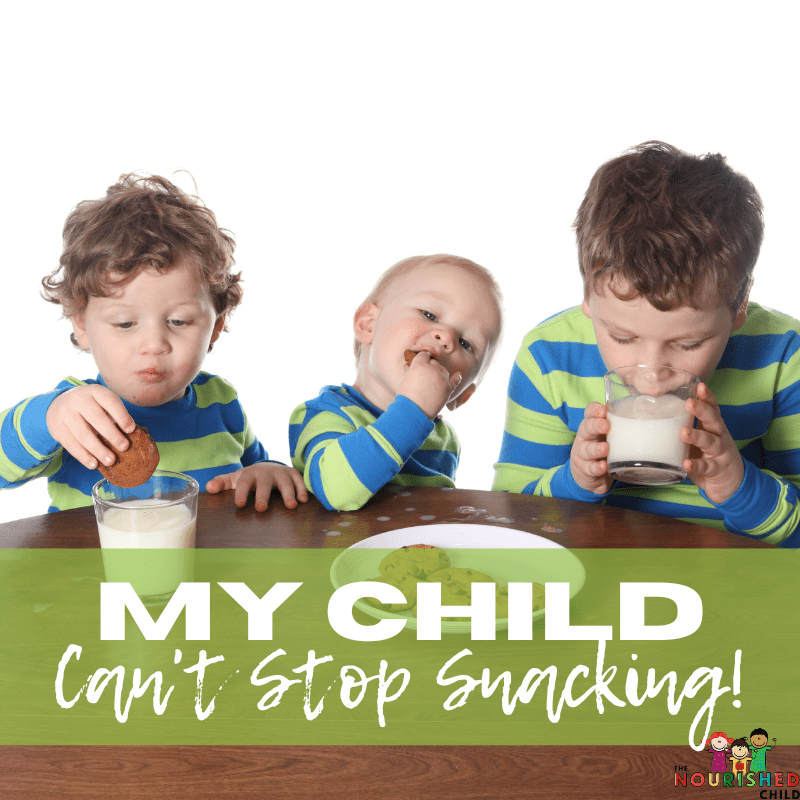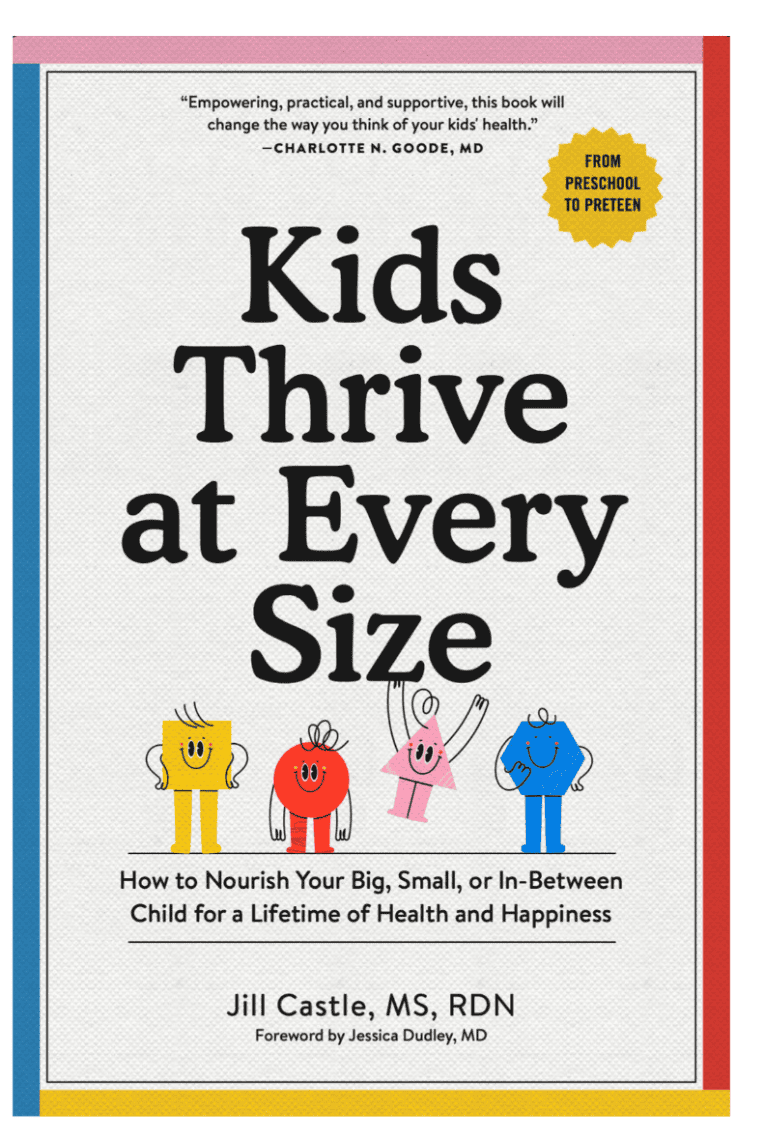Why is My Child Snacking All the Time?
August 20, 2024
Is your child snacking all the time? You’re not alone. A lot of kids today are snacking way too much. Learn why and what you can do.
First things first: I believe snacking is good for children. Especially for young kids with tiny tummies, snacks can be a way to ensure adequate nutrition throughout the day.
Snacking also helps children meet their nutrient requirements and provides an opportunity to try new foods.
But for many kids today, snacking is getting out of hand.
For one, too many calories are coming from snack foods during the day. In fact, about 28% of the calories that kids are consuming comes from savory and sweet snacks. These tend to be cookies, cakes, and candy, and high fat foods like chips and French fries.
Essentially, that’s an extra meal per day in the form of snack foods!
If your child snacks all the time, you may be worried…and frustrated. In this article, I’ll review the common reasons children are snacking too much and what you can do to help.

Why Kids Snack All Day and How to Reduce Snacking
Parents need to understand why children snack so much so they can help them develop healthy snacking habits and use snacks to enhance their nutritional intake, not derail it.
Whether it’s boredom eating or distraction, there are four common reasons kids snack all day.
1. A Lack of Schedule or Structured Times for Snacks
Structure is the routine or schedule that dictates when meals and snacks happen.
When there isn’t a routine, kids tend to figure out what to eat on their own. And, they don’t necessarily pick the best snacks.
What You Can Do: Set up regular times for snacking and pick an area where kids can eat their snacks. Also, determine how many snacks your child will have each day.
The goal is to keep a routine with the same place and timing.
I recommend:
- Snacks in the kitchen, either at the table, or at the kitchen counter.
- Three snacks per day for toddlers; two per day for kids; and one to two per day for tweens and teens
- Timing can vary but, generally, a mid-morning, an after-school snack and/or a bedtime snack are the usual time frames.
When snacks are random and there’s no structure, your child may get worried and seek snacks.
2. Boredom and Other Emotions May Lead to Emotional Eating
Some children eat when they’re bored. Or emotional. Or celebrating. When they eat for reasons other than hunger, it’s a behavior called Eating in the Absence of Hunger.
When this happens, children are disengaged from their appetite cues, which signal us to eat when we’re hungry, and tell us to stop when we’re full.
If a child is eating frequently because they’re bored or need emotional comfort, they may get out of sync with their appetite signals.
What You Can Do: Make sure your child recognizes when their body is sending appetite cues. For example, they may be hungry when they feel cranky or really tired. Or, if their belly growls, or feels uncomfortable, this can also signal hunger, or fullness in the case of discomfort.
We want to help children recognize when they’re truly hungry and encourage them to satisfy this hunger by eating. We also want them to recognize when they’re satisfied, so they can stop eating.
3. Too Many Food Options are Tempting
When we have chips, cookies, candy, and sweets around, it can be really tempting for children, especially those who haven’t mastered their executive functioning and delayed gratification skills.
I’m not saying get rid of less-than-healthy options. I actually believe that having them around is a good thing. It provides an opportunity to learn how to navigate these foods, while also normalizing them as part of the family diet.
What You Can Do: Don’t have too many treat foods hanging out on the countertops (and being too tempting). But do include them as part of your eating pattern so they don’t feel scarce. For instance, at lunch your child may have potato chips because it’s part of the meal plan, or at dinner, they get dessert because you’ve scheduled it in.
When you’re including sweets and treats in the meal plan, you’re sending a message to your child that you’re in charge of when these foods appear.
Your child won’t have to go looking for sweets and treats because they know you’re going to include them as part of their eating routine.
4. Distraction
Being distracted while eating disengages children from their sense of satisfaction and fullness, and may lead to increased food intake.
When you keep snack time in the kitchen, kids are less distracted than they would be when sitting at the computer, watching TV, or playing on their gaming sites and snacking.
We want to make sure that eating snacks happens without distraction, as much as possible.
What You Can Do: Encourage your child to sit down and take the time to focus on eating and enjoy their snack.
Resources

Jill Castle, MS, RD
I like empowering parents to help their children and teens thrive at every size with realistic advice centered on healthful habits around food, feeding, nutrition and health behaviors. As a pediatric dietitian and author, my goal is to share strategies and realistic advice to help you raise a healthy and happy child through my articles and podcast.




